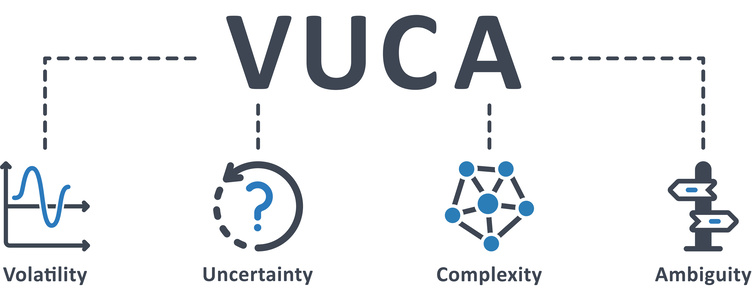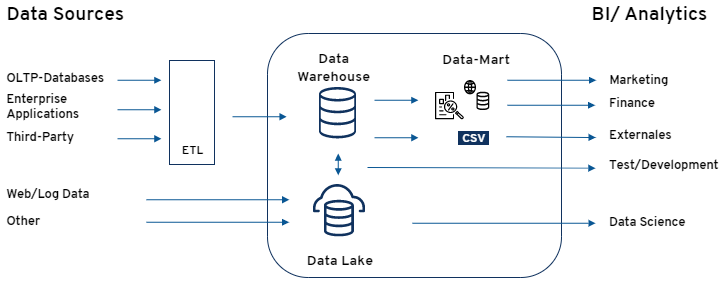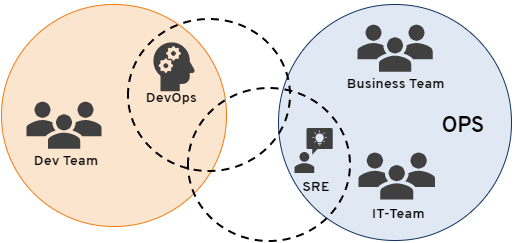Why you need to consider it, to get the most value out of your ERP Transformation
You have decided to transform your SAP ERP landscape to the latest SAP S/4 HANA version, and you know that this will bind a lot of your internal resources as well as require a lot of externals. In addition, since you are most likely going to change a few things in your processes here and there (and hopefully get rid of some leftovers from ancient times), it will also mean a lot of change for your people and processes. Consequently, you already plan for a good amount of training to enable everyone to start straight after the cut-over.
But wait, aren’t you missing something? How are you going to report, monitor and steer in the future?
All right, you have your mature data warehouse that is running rock-solid since ages but is it still capable of dealing with today’s requirements of the business users or is it even possible to report integrated & aligned on the new SAP S/4 processes? What about the cut-over phase from your current ERP system towards the SAP S/4 HANA landscape? Are you able to report for and support your business continuously prior, in parallel and after this period?
BI & Analytics in a VUCA World
Over the past years, we have seen quite a few changes in the reporting area, and it seems that, in our modern VUCA1 world, everything but business intelligence based on data warehousing is needed. Moreover, it seems like BI is dead. At least that is what everyone tries to tell you when selling “new things”, like AI, Machine Learning etc. However, is it really the case, that everything is and will be non-structured and needs to be collected from within a data lake?
In our opinion, the truth is somewhere in the middle, i.e., since we are talking about ERP software (like SAP S/4 HANA or …), there exists a decent amount of structured information that should be used to help in decision making. So based on that data, it is still and will always be possible to record, consolidate, and report data and act based on that outcome.

Of course, there is a growing amount of information, i.e., data that is kept in less structured or even unstructured media and it would be naïve and negligent to not incorporate that into a holistic data strategy and to use it for fulfilling the businesses’ purpose. That leads me to the incredibly good picture of a Lake House as shown in Figure 2. We neither have a classical (pot. isolated) data warehouse nor do we have a lake, but a compromise between those two worlds. The difficulty is to avoid a swamp where nothing can be found.

That metaphor combines the two main aspects of a data warehouse and a data lake. While the data warehouse approach is an architecture enforcing the well-known techniques for keeping guidelines and governance in a working and rock-solid operational state, the data lake enables you to do evolve to the next level of volatile decision making by accessing not only structured information. In the future we cannot (and will not) always wait until long lasting implementation projects incorporate the latest data into a reporting that is needed only for a brief period of time (since the source data or the source itself might be changing meanwhile). However, we still want the system to be reliable and comprehensible. In a lake house, those two drivers would be present.
The volatility of the business surrounding, and the flexibility of your information structures will define how fast you can be to adopt to changes in your supply chains, technological or legal changes as well as geopolitical and health (pandemic) situations.
So, when talking about such a transformative step as the execution of an SAP S/4 HANA transformation, this transformation decision will not only be about the actual changes within your ERP processes, but it will moreover result in the inevitable need to change your way on how to deal with your “new gold”. Your data and information is prepared for a fully flexible and adaptable 3rd party data exchange, adopt to various sources and drains, be it market, vendor, customer or any other systems data.
“We have always tried to be more supportive to the business, but we also have our IT-governance to strictly follow” one might answer promptly. Well, that is understandable to some extend but if one was asking the reporting stakeholders (e.g., the finance team), it is highly likely to obtain a different answer. Coming from a more traditional Data Warehousing or Business Intelligence approach, many organizations are facing the challenge to balance the “controlled and reliable” IT- approach vs. the “flexible and autonomous” business department’s demand.
That seemingly impregnable contradiction often feels a little like the former “battle” between IT-demands and IT-operations that was fought over decades. But here, we found already a suitable solution: Dev-Ops (see Figure ) to bring both parties closer together to successfully and jointly be responsible for operations. So why don’t just use that pattern and approach but make the “loop” a little wider including not just operations but also the business? In our opinion, that would be solving two fundamental aspects in the rivalry mentioned above:
1.IT-Ops and Business are responsible for operational tasks and duties (together).
2.Both learn about the other’s perspective to better fulfil the overarching companies’ goals.

Taking it even further, while implementing credits for failures (as drafted in the site reliability engineering (SRE) concept), there will always be room for improvement and renewal while still guaranteeing the operational Service Level Agreement (SLA) and thus the stability of the IT systems.
AdEx Partners BI & Analytics Approach
At AdEx Partners, we supported a plethora of transformation projects, leading to our current transformation methodology. Here, one of our core deployment readiness checks, analyses the process alignment of a well-known, documented and understood KPI and reporting structure along the company.
During an SAP S/4 transformation, the core data source is about to change. Consequently, it is advisable, to take a step back and decide if the existing KPI and reporting structure would be still sufficient and future ready afterwards. In most occurrences, this is not the case but, embracing the opportunity to allow preparation and generating a holistic company process analysis.
Generate a Holistic view of a target landscape
To obtain a clear picture of your (technical) target landscape, you will have to deal with answering the following questions on how to
- operate your processes along the landscape,
- monitor/report on these processes and finally
-
steer the company based on planning and monitoring the processes?
In addition, this is usually the right point in time to use the momentum of change and consider incorporating other (if not already available) data into the reporting portfolio. By combining business relevant and available data into insights we turn those into value to make reliable decisions on a holistic company view.
Defining a well thought through KPI and reporting strategy and putting it in place prior to your transformation will not only make your company future ready but also help your company to be reliably steered through the transformation and thereafter. Here, a holistic enterprise reporting strategy will also
- define a reliable and vital governance model incl. key analytical patterns and identified personas that are addressed,
- draft a forecasting and planning vision incl. strategic foresight
- align with recent security and compliance requirements,
- define ROI measures for reporting and analytic scenarios,
- prioritize topics by a business-discovery-matrix comparing business pain vs. business impact.
BI is dead, long live BI (aka Steering is Believing)
In the past, BI was seen as a separate function, often relegated to a small team of data analysts and IT professionals. However, today BI is an integral part of the business, with data-driven decision-making guiding every aspect of strategy, operations, and innovation.
At the heart of this approach is the idea that data is only useful if it is actionable. The new era of BI focuses on real-time data visualization and self-service analytics, allowing decision-makers to explore data in new ways and make informed decisions quickly. This requires a cultural shift within a company’s organization. It means creating a data-driven culture that values transparency, accountability, and continuous improvement. It means empowering employees at all levels to access and analyse data, breaking down the silos that have traditionally separated BI from the rest of the business. By combining data-driven insights with human expertise, businesses can make better decisions, faster, and with greater confidence.
In conclusion, this is a powerful concept stressing the central role that data now plays in modern business. By embracing this approach and its change, organizations can unlock the full potential of their data, driving innovation faster, improving efficiency, and gaining a competitive edge in an increasingly data-driven world.
Conclusion
We firmly believe that we can help you along this journey, no matter whether you start in the lake or with the strongly structured and firmly build house, please get in touch and we can work together to get you to the modern, flexible the Lakehouse.

